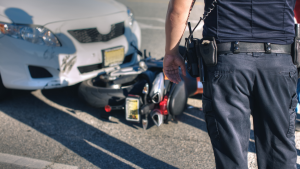Disaster preparedness is a critical aspect of ensuring the safety and resilience of urban areas. As cities grow and become more densely populated, the potential impact of natural and man-made disasters increases significantly. Effective disaster preparedness can mitigate the effects of such events, saving lives and reducing economic losses. This blog explores the importance of disaster preparedness in urban areas, highlighting key strategies and best practices.
Understanding urban disaster risks
Types of disasters affecting urban areas
Urban areas are susceptible to a wide range of disasters, including natural disasters such as: earthquakes, floods, hurricanes, man-made events like industrial accidents, and terrorist attacks. Each type of disaster presents unique challenges and requires specific preparedness measures. For example, earthquakes can cause widespread structural damage, while floods can disrupt essential services and contaminate water supplies.
The impact of urbanisation on disaster risks
Rapid urbanisation exacerbates the risks associated with disasters. As cities expand, natural landscapes are often replaced with concrete structures, reducing the land’s ability to absorb excess water and increasing the likelihood of flooding. Additionally, high population density can lead to more significant human and economic losses when disasters strike. Urban areas also tend to have complex infrastructures that are interconnected, meaning that a disaster in one part of the city can have ripple effects throughout the entire area.
Key elements of disaster preparedness
Early warning systems
One of the most effective ways to mitigate the impact of disasters is through early warning systems. These systems provide advance notice of impending disasters, allowing people to take necessary precautions. For example, weather forecasting technology can predict hurricanes and floods, giving residents time to evacuate or reinforce their homes. Early warning systems also enable emergency services to prepare and respond more effectively.
Community education and training
Educating the public about disaster preparedness is crucial. Community education programmes can inform residents about the risks they face and the steps they can take to protect themselves. Training sessions can teach essential skills such as first aid, evacuation procedures, and how to create emergency kits. Engaging the community in disaster preparedness efforts ensures that everyone is better equipped to handle emergencies.
Infrastructure resilience
Building resilient infrastructure is a key component of disaster preparedness. This includes designing and constructing buildings to withstand earthquakes, floods, and other hazards. Retrofitting older structures to improve their resilience is also essential. Additionally, critical infrastructure such as hospitals, schools, and emergency services must be designed to remain operational during and after disasters.
Emergency response plans
Every urban area should have comprehensive emergency response plans in place. These plans should outline the roles and responsibilities of various agencies and organisations during a disaster. They should also include procedures for evacuation, communication, and coordination. Regular drills and simulations can help ensure that these plans are effective and that all stakeholders are familiar with their roles.
The role of technology in disaster preparedness
Geographic Information Systems (GIS)
GIS technology plays a crucial role in disaster preparedness by providing detailed maps and data on hazard-prone areas. This information can be used to plan evacuation routes, allocate resources, and identify vulnerable populations. GIS can also help monitor the progress of disasters in real-time — enabling more effective response efforts.
Social media and communication tools
Social media platforms and communication tools are invaluable for disseminating information quickly during disasters. Authorities can use these platforms to issue warnings, provide updates, and coordinate with the public. Social media also allows residents to share information about their safety and the situation in their area, helping emergency services to allocate resources more effectively.
Drones and remote sensing
Drones and remote sensing technology can provide real-time data and imagery during disasters, helping to assess damage and identify areas that require immediate assistance. These technologies can also be used for search and rescue operations, delivering supplies to inaccessible areas and monitoring recovery efforts.
Challenges in urban disaster preparedness
Resource constraints
One of the primary challenges in disaster preparedness is the availability of resources. Many urban areas, particularly in developing countries, lack the financial and technical resources needed to implement comprehensive preparedness measures. Ensuring adequate funding and support for disaster preparedness initiatives is crucial.
Coordination among agencies
Effective disaster preparedness requires coordination among various agencies and organisations, including government bodies, emergency services, non-profits, and the private sector. Ensuring seamless communication and collaboration can be challenging, especially in large urban areas with complex administrative structures.
Public awareness and engagement
Raising public awareness and ensuring community engagement in disaster preparedness efforts can be difficult. People may be complacent or unaware of the risks they face, and it can be challenging to motivate them to take proactive measures. Continuous education and outreach are essential to build a culture of preparedness.
Best practices for urban disaster preparedness
Inclusive planning
Disaster preparedness plans should be inclusive, considering the needs of all community members, including vulnerable populations such as the elderly, children, and people with disabilities. Ensuring that everyone has access to information, resources, and support is vital for effective preparedness.
Continuous improvement
Disaster preparedness is an ongoing process that requires continuous improvement. Regular assessments, drills, and evaluations can help identify gaps and areas for enhancement. Learning from past disasters and incorporating lessons learned into preparedness efforts is crucial for building resilience.
International collaboration
Disasters often have global implications, and international collaboration can enhance disaster preparedness efforts. Sharing knowledge, resources, and best practices across borders can help urban areas build more effective preparedness strategies. International organisations, such as the United Nations, play a crucial role in facilitating this collaboration.
Disaster preparedness in urban areas is essential for safeguarding lives, reducing economic losses, and ensuring the resilience of communities. By implementing early warning systems, educating the public, building resilient infrastructure, and leveraging technology — urban areas can enhance their preparedness for disasters. Addressing challenges such as resource constraints, coordination among agencies and public engagement is also critical. Through inclusive planning, continuous improvement, and international collaboration, urban areas can build a safer and more resilient future.
Enhance your skills in disaster response and safety protocols with Lyceum’s Bachelor of Arts in Disaster and Safety Management programme. Equip yourself with the knowledge to manage emergencies, reduce risks, and protect communities. Sign up now and be a beacon of safety and preparedness!



